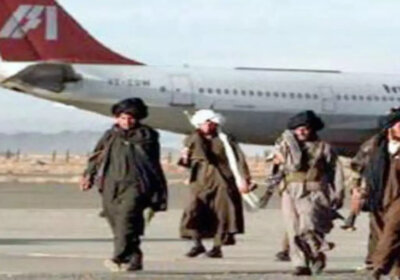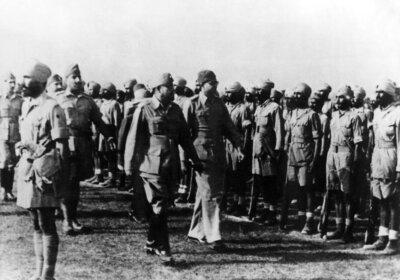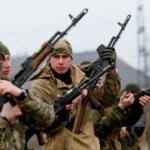The defense of the Soviet Union against the Siege of Germany ended in an epic War during the Second World War. It was a prolonged siege of 900 days and was known as the ‘Siege of Leningrad’. It was an epic drama of heroism as well as human misery. The armed forces of Germany and Finland besieged the city of Leningrad, situated in St.Petersburg of the Soviet Union.

The Siege Of Leningrad: WW2
What was the reason for the Siege?
Leningrad was considered the target of invasion by Hitler long ago. The place was industrially very rich, including more than 600 factories. Leningrad was in second place in industrial output, just after Moscow.
What happened in the Siege of Leningrad?
The Siege lasted exactly 872 days, and more than one million people died. Many of them were civilians of the city and the others were the defenders of the Red Army of Leningrad, St Petersburg which was then the capital of the Russian empire.
Who won the Siege?
The Siege officially commenced on 8th September 1941. On 27th January 1944, the Soviet forces broke the siege line permanently, which ended the almost 900-day Siege by the Germans, which resulted in the deaths of many Russian lives.
Some Important Facts About The Siege
Leningrad was the main target of the Nazis- St.Petersberg (formerly known as Leningrad) was an important city in Russia. It was strategically important due to its strong military hold in the North. About 10% of the industrial output of the Soviet Union was produced by Leningrad, which became even more valuable for the Germans. Hitler was confident enough to capture Leningrad and planned the Siege accordingly.
Leningrad was cut off from the rest of the World- Red Army transported different supplies and evacuated all the civilians. The road which was used for the evacuation was known as the Road of Life. The Road over Lake Ladoga was entirely covered with ice during winters. Watercraft were being used during the summer months when the ice defrosted. Vehicles were stuck in the snow or bombed on the way. Though not a safe and reliable road, it was important to resist Soviet attacks.
Siege was a part of Operation Barbarossa- Hitler led the Soviet Union invasion in December 1940. In June 1941, around 3 million soldiers started to invade some parts of the Soviet Union, including the western borders.
Lasted For Exactly 872 days- The Siege began on 8th September 1941 and was lifted on 27th January 1944. Around 1.2 million people were destroyed during the Siege.
People Who Stayed, Suffered- Some historians have described the Siege as Genocide. But the Germans were motivated to starve civilization to death. Hunger and very low temperature led people to death. People were forced to eat anything as they were supposed to get 3 slices of bread daily. In a month, over 10000 people died of starvation. Around 2000 people were arrested for cannibalism.
Several Attempts Were Made By The Red Army To Lift The Siege- In 1942 Autumn, the first attempt was taken to lift the Siege, which was popularly known as Operation Sinyavino. The next attempt was taken in 1943 and was known as Operation Iskra. Though many German forces were destroyed, neither of the attempts was successful.
Finally Lifted in 1944- The Siege was finally lifted on 26th January 1944. The Red Army made the final attempt in January 1944. After 2 weeks of severe fighting, German forces were completely expelled from Leningrad.
City Was Completely Destroyed- Palaces and buildings were destroyed throughout the city of Leningrad. The Catherine Palace and the Peterhof palace were demolished and removed from the Amber room. Factories, hospitals, schools, and other important civil structures were demolished.
A deep Scar- Those who survived in Leningrad had a deep scar of memories of the events. Though the city was repaired gradually, the damages and the destruction remained visible. The city was designated as the ‘hero city’ due to the bravery of the civilians. In the 1970s, a monument was built in Victory Square at the center of the city to commemorate the Siege. Among the survivors, poet Anna Akhmatova and composer Dimitri Shostakovich produced poetries and compositions influenced by the horrible experiences of the Siege. All the aspects starting from the dramatic, economic, and political effects after the Siege changed significantly. The political and economic system became highly centralized.
Conclusion
Hitler targeted Leningrad long ago, and the Siege started in 1941. The Siege continued for 872 days and ended in the year 1944. Most of the places of the city were destroyed due to bombing, air raids, and other strategies of the German forces. Those who survived after the Siege were deeply hurt in their bodies and minds. Buildings like schools and hospitals were demolished, and the damages were deep.

The Siege Of Leningrad: WW2























Pingback: Why Did the World Went To First World War?